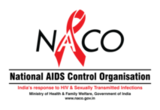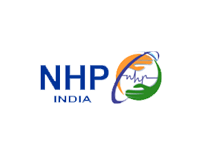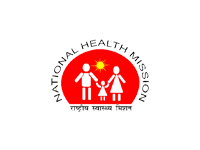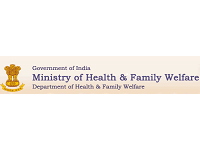The National AIDS Control Programme (NACP III) condom promotion strategies recommended on integrating the promotion of condoms for family planning and HIV/AIDS intensely across the entire country using social marketing approaches. This integration will enable implementation of highly focused social marketing programmes aimed at achieving the NACP III goal and of ensuring that every sex act with risk of unwanted pregnancy and HIV/AIDS transmission is protected with condom use. While translating this audacious goal into action the demand of condoms needs to grow from 2.2 billion to 3.5 billion and number of outlets selling condoms need to grow from 1.1 million to 3 million by 2012. The number of social marketing programmes on the ground needs to grow from the existing 10 to 25. The analysis of the social marketing programmes indicated its attribution to growth in the condom market and condoms. This led to the recommendations made by the working group of NACP III for adoption of social marketing strategies under NACP III. NACO has constituted a Technical Support Group towards development and implementation for condom social marketing programmes for achieving NACP III objectives of condom promotion.
Objectives of NACP-III relating to the Condom Promotion
- Condom Promotion Objectives
- The condom promotion objectives aim to protect all sex acts that can put someone at the risk of HIV and/or unwanted pregnancies. The specific objectives of the condom promotion in NACP III are to enhance the demand of condoms from 2.2 billion to 3.5 billion and the number of outlets selling condoms three-fold from 1.1 million to 3 million over the next two years. Emphasis will be placed on opening new non-traditional condom outlets. The condom promotion objectives should be achieved through concentrated efforts in increasing supply and demand for condoms in the high risk areas and rural coverage for preventing unwanted pregnancies.
- It is envisaged that all the three channels of condom supply – free distribution, social marketing and commercial sales – will work in a complementary manner, each providing products to different target groups. The consumer base for socially marketed condoms will be increased by using behaviour change strategies to move the current users of free condoms to socially marketed condoms and to motivate current non-users to use condoms in all non-regular sex acts. Free supply of condoms will be limited to the population at the greatest risk of HIV or those who can not afford to buy socially marketed condoms such as population below poverty line, female sex workers and men who have sex with men
- Social Marketing Objectives
- The social marketing programmes of NACO will contribute substantially to the HIV prevention objectives of NACP III. The targeted growth trajectory for subsidized condoms, marketed by the social marketing organizations, is to increase the subsidized condom market to 2 billion from the current market of 843 million [source: ORG retail off take survey- 2009) by the year 2012.
- Social marketing programmes will create access to condoms through saturated coverage of high risk areas, and expanded access in the rural areas. Evidence-based behaviour change activities will be an integral part of the social marketing programmes. The mid-media activities of behaviour change communications will increase demand for condoms through generic promotion of condoms and addressing barriers to condom use.
- The target population for the social marketing programme is men in the reproductive age. Condoms will be promoted as a method for dual protections (providing protection against HIV and other STIs, as well as against unwanted pregnancies) through strategic communication approaches towards normalization of condoms. The normalization of condoms would include (but not limited to) the concepts that increase the perceptions of positive social support, social norms, self efficacy in buying, carrying and use of condoms without embarrassment. The desired behavioural outcomes of the programme are to:
- Increase consistent use of condoms among men with the non-regular sexual partners.
- Increase consistent use of condoms among men in commercial sex encounters.
- Increase use of condoms for preventing unwanted pregnancies among married couples.
The supply objectives of the condom social marketing programme are to:
- Increase the retail off-take of social marketed condom to 2 billion by 2012.
- Increase the number of condom outlets to 3 million by 2012
- Increase the accessibility of condoms to make it available within 15 minutes of walking distance from any location.
In order to achieve the above objective and to achieve operational efficiency, NACO has initiated the Condom Social marketing Programme based on the prioritization of geography.
- Prioritization of geography
- In order to maximize the health impact, the priorities are to saturate the coverage of areas that have generalized spread of disease. The high risk areas in the high prevalence districts will receive a package of marketing services in order to increase supply and demand for the prevention products.
- The categorization of the districts is an evidence based decision to prioritize geography and designing an intervention in response to the risk, need and demand in the district. BSS 2006, NFHS III, consumer off take surveys, population data, HIV surveillance data and rapid household surveys are considered to prioritize the districts in each of the state. Appropriate packages of social marketing program will be implemented for each strata of the district. The districts has been categorized as below
- Condom Vending Machines (CVM)
NACO installed 11,025 CVMs in 10 states under a national programme in Phase I in 2005-07. The CVMs provide anytime access to quality condoms in a non-embarrassing situation. Another 10,025 CVMs are being installed in four metros (Delhi, Mumbai, Kolkata and Chennai) and in two major towns of UP and Orissa in Phase-II of the programme that began in 2008.
- Female Condoms (FC)
The FC programme was implemented through selected NGOs in six high prevalence states. The results from the pre-programme assessment indicated high levels of acceptance of FCs among sex workers and close to 5% reduction in unprotected sex acts. Based on the encouraging results from the FC pre-programming assessment in six states, NACO is funding the FC scale up programme in four states of Tamil Nadu, Andhra Pradesh, West Bengal and Maharashtra. Another FC scale up programme funded by UNFPA is being implemented in four states of Bihar, Jharkhand, Orissa and Rajasthan. NACO is providing female condom at a highly subsidized rate. Based on the learnings of the current FC programme, TSG has proposed to scale up female condom programme on pilot basis in two to three districts of another nine states each. So far NACO has procured 30 lakh female condoms, out of which 24 lakh pieces of FC has already been delivered to the implementing agencies.
- Special Condom for MSM
The prevention strategies of NACP III recommend innovations in condom attributes to support coverage of MSM population for HIV prevention among MSM population. The MSM interventions implemented under NACP II has articulated the limitation of the normal lubricated condoms for MSM population. The product attributes specifically in terms of the thickness and provision of additional lubricants in sachets along with the condoms have been considered to address the needs of the MSM community. As a result, a thicker and more lubricated condom brand "Spice Up" is being launched to cater to special needs of the high-risk groups i.e. MSM. These condoms will be socially marketed in the targeted intervention sites. This specially designed condom will cater to the specific needs of the MSM.
| Category | Definition |
|---|---|
| High prevalence and high family planning need | Districts that are ‘A’ or ‘B’ category of HIV prevalence and Districts that have high fertility and high unmet need for birth spacing and low condom use for family planning. |
| High Prevalence and low family planning need | Districts that are ‘A’ or ‘B’ category of HIV prevalence and Districts that have low fertility and low unmet need for birth spacing and high condom use for family planning. |
| Low prevalence and high family planning need | Districts that are ‘C’ or ‘D’ category of HIV prevalence and districts that have high fertility and high unmet need for birth spacing and low condom use for family planning. |
| Low prevalence and low family planning need | Districts that are ‘C’ or ‘D’ category of HIV prevalence and Districts that have low fertility and low unmet need for birth spacing and high condom use for family planning. |
NACO Targeted Condom Social Marketing Programme
NACO has initiated the targeted condom social marketing programme in 2008 to saturate the coverage of condoms at high risk areas. So far, NACO has successfully implemented two phase of condom social marketing programme.The phase I of Condom Social Marketing Programme was implemented in 2008 across 194 high priority districts of 15 states. The second phase of Condom social Marketing Programme in being implemented across 294 high priority districts.
The achievements of these two phases of condom socials marketing programme
Scaling up of NACO Targeted Condom Social Marketing Programme Phase III
Based on the successful implementation of the earlier two phases of Targeted Condom Social Marketing Programmes, NACO has decided to further scale up the condom social marketing programme.The phase III of CSM would be starting from June 21st,2010 and would be implemented across 370 high priority districts .The programme would be implemented by eight identified SMOs.The major focus of this programme would be to enhance the accessibility of condoms at high risk areas in high prevalence states and rural areas in high fertility districts.
Innovative Approaches– To Propel the Objective to a New Dimension
NACO has launched a number of innovative approaches to promote condom use. These are:
Condom Fate Study Report

























